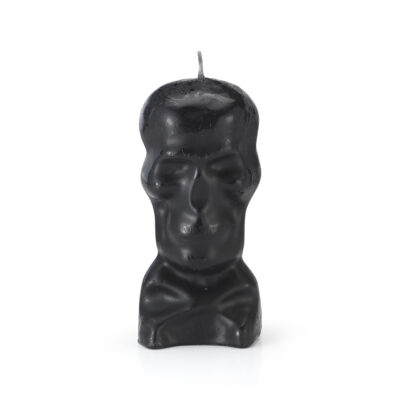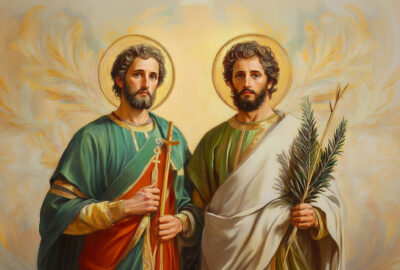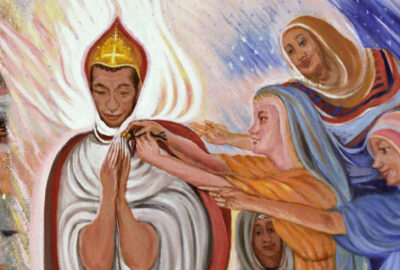
All Saints’ Day Explained: History, Rituals & Spiritual Meaning
The autumn season ushers in a time of reflection and remembrance for many cultures around the world. While some celebrate Samhain and others indulge in Halloween festivities, All Saints' Day emerges as a solemn occasion to express love and appreciation for those who have passed away. This article delves deeper into the history of All Saints' Day, its significance, and how it is celebrated across different regions, shedding light on the diverse ways in which people honor their departed loved ones during this special time.
Unveiling the Enigmatic Origins of All Saints' Day
The origins of All Saints' Day are shrouded in the mists of history, making it challenging to pinpoint its exact inception. However, historians suggest that the choice of November 1st as the date for this observance may have been influenced by earlier Pagan celebrations that venerated the deceased. In ancient times, the Feast of the Lemures was celebrated on May 13th, and it marked the first recorded instances of honoring the departed.
Initially, it was customary to commemorate the anniversaries of individual martyrs' executions. However, as the number of Catholic martyrs grew, it became impractical to allocate separate days for each one. Consequently, the Church instituted a unified celebration: All Saints' Day. The official recognition of November 1st as the date for this commemoration occurred in the seventh century when Pope Gregory III established a repository for the relics of apostles, confessors, martyrs, and saints.
While Catholic celebrations of All Saints' Day predominantly focus on saints who have been canonized by the Church, Protestants take a broader approach by commemorating all Christians who have entered heaven. This inclusivity reflects the diversity of religious observance associated with this day.
The Spiritual Meaning and Symbolism of All Saints’ Day
All Saints’ Day is not only a time of remembrance but also a celebration of light, unity, and eternal connection. Spiritually, it reminds us that love never fades and that the presence of our departed loved ones continues to guide us from beyond the veil. The day invites reflection on holiness, virtue, and the divine spark that exists in all souls.
The colors most often associated with All Saints’ Day (white, gold, and purple) carry deep symbolic meaning. White represents purity and rebirth; gold stands for divine illumination; and purple reflects spiritual introspection and transformation. The act of lighting candles is more than a tradition; it’s a sacred symbol of faith and hope that pierces through the darkness.
To bring this symbolism into your own observance, create a small altar adorned with white candles or gold candles, frankincense and myrrh incense, and perhaps a Saint medal that holds personal meaning for you. These simple sacred items honor both the saints and your own ancestors, helping you open a space of light and reverence within your home.
How is All Saints' Day Celebrated?
All Saints' Day holds a special place in the Catholic liturgical calendar as a Holy Day of Obligation. This means that Catholics are expected to attend mass as part of their observance. During the service, a reading of the Beatitudes, a collection of blessings given by Jesus, is a common tradition. Afterward, many individuals choose to light candles in memory of deceased relatives or visit cemeteries to leave flowers on graves.
Around the world, various folk traditions have developed in conjunction with All Saints' Day. In countries like Poland, Hungary, and Portugal, it is customary to leave lit candles in windows to guide the souls of the departed. In some regions of Italy, children anticipate gifts from deceased loved ones during this time.
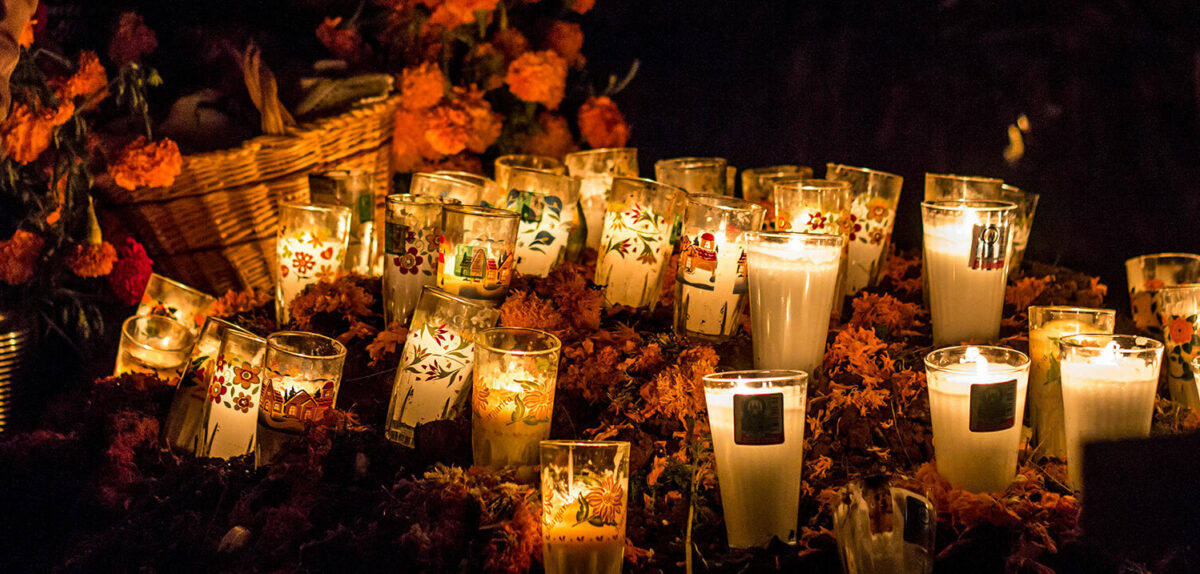
In Mexico, All Saint's Day intertwines with the Day of the Dead, where it is believed that the spirits of departed children return to the living world.
All Saints' Day Around the World
All Saints' Day embodies a universal essence that transcends cultural boundaries, manifesting itself uniquely in various corners of the globe. In Mexico, it intertwines intimately with the Day of the Dead (Dia de los Muertos), where it is believed that the spirits of departed children return to the living world. The subsequent day, All Souls' Day, is dedicated to adult spirits.
Families make pilgrimages to cemeteries to lovingly tend to and embellish graves with an array of vibrant flowers, the warm glow of candles, and the flutter of streamers. Within this tapestry of remembrance, merchants offer iconic sugar skulls, skeletal figurines, and miniature coffins. Meanwhile, in homes adorned with cherished photographs, nourishing food offerings, and a profusion of decorative objects, altars are erected to honor and remember departed relatives.
In French-speaking regions, All Saints' Day is known as La Toussaint, characterized by the reverent act of adorning graves with wreaths of chrysanthemum flowers. These floral arrangements symbolize the enduring beauty and resilience of life that persists beyond the boundaries of mortality.
Similarly, in the Philippines, the Day of the Dead, known as Araw ng mga Patay, involves the solemn rite of visiting ancestral tombs. Here, families diligently undertake the responsibility of cleansing and maintaining the resting places of their loved ones. As a gesture of respect and remembrance, they offer sustenance in the form of food, the fragrant embrace of flowers, and the gentle illumination of candles.
Though these diverse traditions exhibit unique expressions, they share an underlying tapestry woven with common threads. The universal act of visiting the graves of the departed, offering heartfelt prayers, and bestowing symbolic tokens of love and reverence underscores the profound sentiment that binds people across the globe during this poignant season of remembrance. All Saints' Day, in its myriad forms, serves as a powerful testament to the enduring human impulse to honor and preserve the memories of those who have journeyed beyond this world.
An All Saints' Day Prayer
It is customary to pray on this holiday. There are many prayers available, stretching all the way back to antiquity. One prayer, dating from the 10th century, is as follows...
How shining and splendid are your gifts,
O Lord which you give us for our eternal well-being
Your glory shines radiantly in your saints,
O God, in the honor and noble victory of the martyrs.
The white-robed company follow you, bright with their abundant faith;
They scorned the wicked words of those with this world's power.
For you they sustained fierce beatings, chains, and torments, they were drained by cruel punishments.
They bore their holy witness to you who were grounded deep within their hearts;
they were sustained by patience and constancy.
Endowed with your everlasting grace, may we rejoice forever with the martyrs in our bright fatherland.
O Christ, in your goodness, grant to us the gracious heavenly realms of eternal life.
Modern Ways to Celebrate All Saints’ Day at Home
While many still attend church services or visit cemeteries, All Saints’ Day can also be celebrated in simple and personal ways at home. Creating your own sacred space allows you to connect with your loved ones in a setting filled with peace, reflection, and gratitude.
Start by lighting white or purple candles to represent purity and remembrance. Place photographs or small keepsakes of departed loved ones on a clean surface, perhaps beside a bowl of holy water or burning incense. Offer prayers, write letters of gratitude to those who have passed, or share stories with family members to keep their memory alive. You can also prepare a favorite meal of a loved one as an offering, symbolizing love that continues through generations.
For a peaceful home ritual, consider using saint candles, Holy Water, and Frankincense incense to fill the space with sacred energy. These timeless elements create a sense of divine connection, transforming your home into a sanctuary of remembrance.
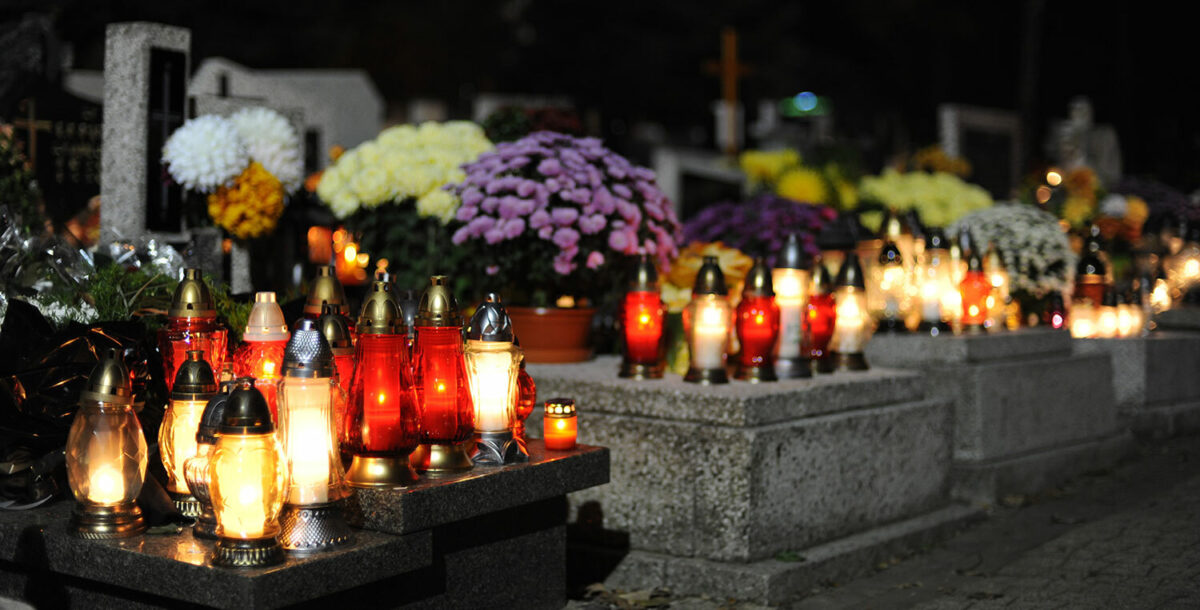
Lighting candles is a heartfelt and meaningful way to honor and remember your departed loved ones on this sacred day.
All Saints' Day Candle Lighting Ritual
The All Saints' Day Candle Lighting Ritual is a heartfelt and meaningful way to honor and remember your departed loved ones on this sacred day. By lighting candles, incorporating herbs, and setting intentions, you can create a space of reverence and connection to the spirits of those who have passed away. This ritual can be performed individually or with a group, providing a sense of spiritual solace and unity. Here is what you will need for this solemn ritual...
- White candles, purple candles, or Saint candles
- Frankincense and myrrh incense
- Photos or mementos of your departed loved ones
- Optional Offerings such as favorite foods, drinks, or flowers as symbols of remembrance.
Start by creating a tranquil and undisturbed space where you can focus your intentions. Once your space is prepared, arrange your candles, incense, and photographs or mementos on an altar or a table, arranging them in a manner that resonates with you visually and emotionally. Light the incense to cleanse the space, allowing its fragrant smoke to envelop the area in a sense of reverence.
Take a moment to center yourself. Close your eyes, breathe deeply, and clear your mind of any distractions. Focus your thoughts on the intention of connecting with the spirits of your departed loved ones, inviting their presence into this sacred space.
Begin by invoking the spirits or saints you wish to honor. You can say a heartfelt prayer or recite their names aloud, inviting them to join you in this moment of remembrance and connection.
Now, light the candles one by one, dedicating each to a specific saint or departed loved one. As you do so, speak their names and express your love, gratitude, and any specific intentions or messages you wish to convey to them.
With the candles aglow, sit in silent meditation. Reflect on the memories you shared with these departed souls, and contemplate the positive impact they had on your life. Feel their presence in the flickering candlelight and the quiet of the moment.
If you've prepared offerings such as favorite foods, drinks, or flowers, place them before the candles as a symbol of your respect and remembrance. Offer your prayers or personal messages to the departed souls, sharing your feelings and seeking their blessings or guidance.
As you conclude this sacred connection, express your gratitude to the spirits for their presence and blessings. With intention, blow out the candles one by one, starting with the last one lit, and visualize the energy of your intentions rising with the smoke.
Allow the incense to burn out entirely, and you can choose to keep the candles and altar set up for the remainder of the day or for as long as it feels appropriate. When the time comes to disassemble the setup, do so with care and reverence.
Take a moment to reflect on your experience. In a journal, capture your thoughts, emotions, and any insights you gained during the ritual. This All Saints' Day Candle Lighting Ritual is a deeply personal and meaningful way to honor the lives of those who have passed away, fostering a sense of connection, healing, and spiritual closeness with the departed souls. Customize it as you see fit to align with your beliefs and preferences, and may it provide comfort and solace on this special day.
All Saints’ Day FAQs
What is the spiritual meaning of All Saints’ Day?
It’s a celebration of divine light and remembrance, honoring all saints and loved ones who have completed their earthly journey and now dwell in peace.
How is All Saints’ Day different from All Souls’ Day?
All Saints’ Day honors all saints and holy souls in heaven, while All Souls’ Day focuses on praying for those still on their spiritual path toward divine rest.
What is the difference between All Saints’ Day and the Day of the Dead?
All Saints’ Day differs from the Day of the Dead in tone and tradition. All Saints’ Day is a solemn Christian observance, while the Day of the Dead is a colorful, joy-filled honoring of ancestors. Both share the same spirit of remembrance and love.
Can I celebrate All Saints’ Day if I’m not Catholic?
Yes. Anyone can take part in All Saints’ Day as a moment of reflection and gratitude for those who have passed, regardless of faith or background.
What colors and symbols are used on All Saints’ Day?
White and gold symbolize holiness and renewal, while purple represents reflection and peace. Candles and incense embody light and spiritual connection.
Which saints are commonly honored on this day?
Many honor St. Mary, St. Joseph, and St. Michael, though the day is meant to recognize all saints, known and unknown.
How can I honor loved ones at home?
Light a candle, offer prayers, display photographs, or share stories to keep their memory alive in your heart and home.
Paying Tribute to Beloved Departed on All Saints' Day
As autumn graces us with its presence, cultures worldwide unite in a common sentiment of reflection and remembrance. Amidst the festive allure of Samhain and Halloween, All Saints' Day emerges as a solemn occasion, a time to express profound love and appreciation for those who have embarked on their journey beyond.
From its obscure beginnings veiled in history's mist to its establishment as a unified celebration in the seventh century, All Saints' Day showcases the enduring human connection with the departed. This observance, both within religious traditions and in the wider cultural tapestry, offers a day of remembrance and unity.
In this season of reflection and love, may the traditions of All Saints' Day continue to serve as a timeless reminder that our bonds with the departed endure, offering solace, comfort, and an everlasting connection that transcends the boundaries of mortality.
